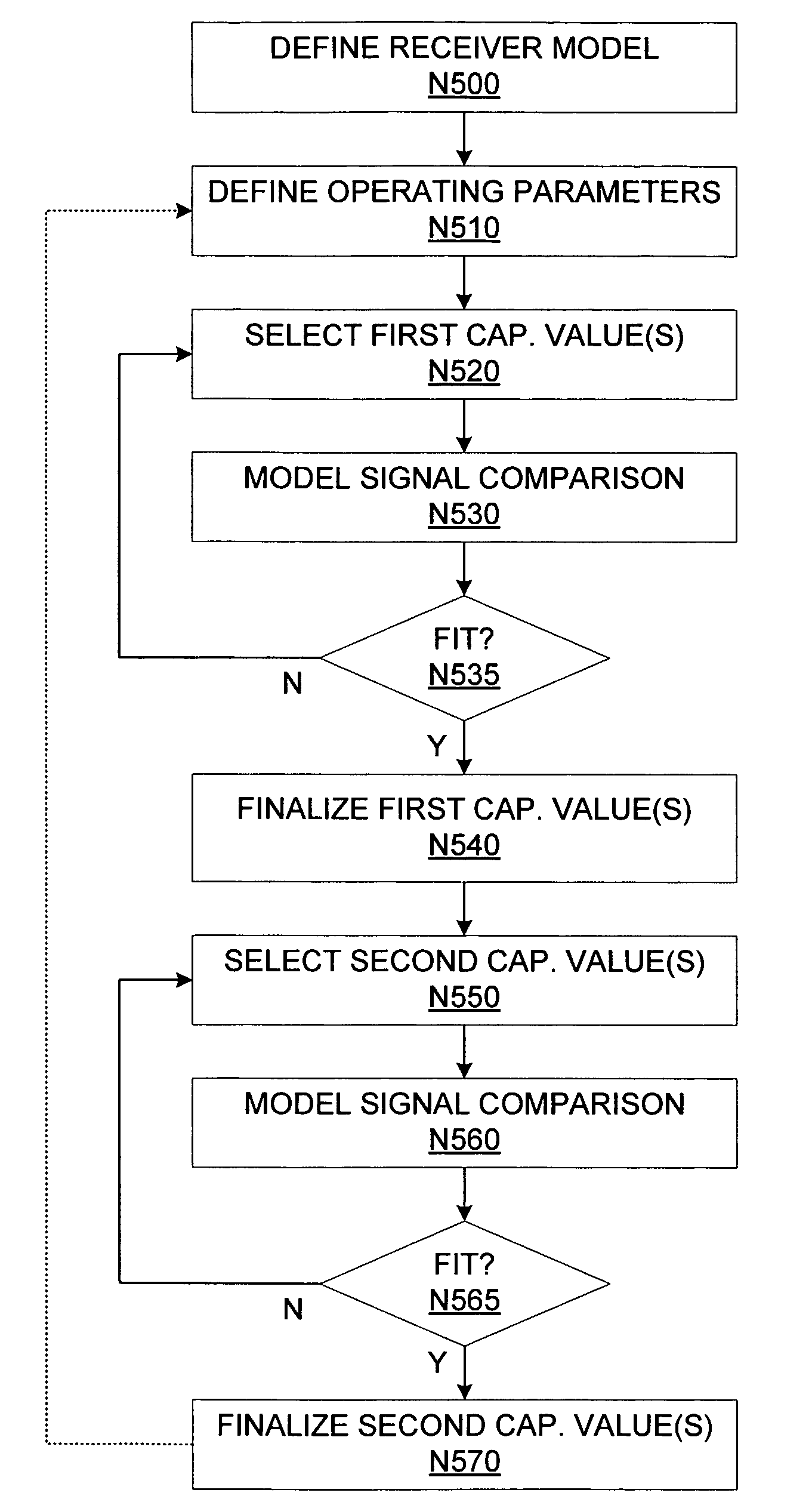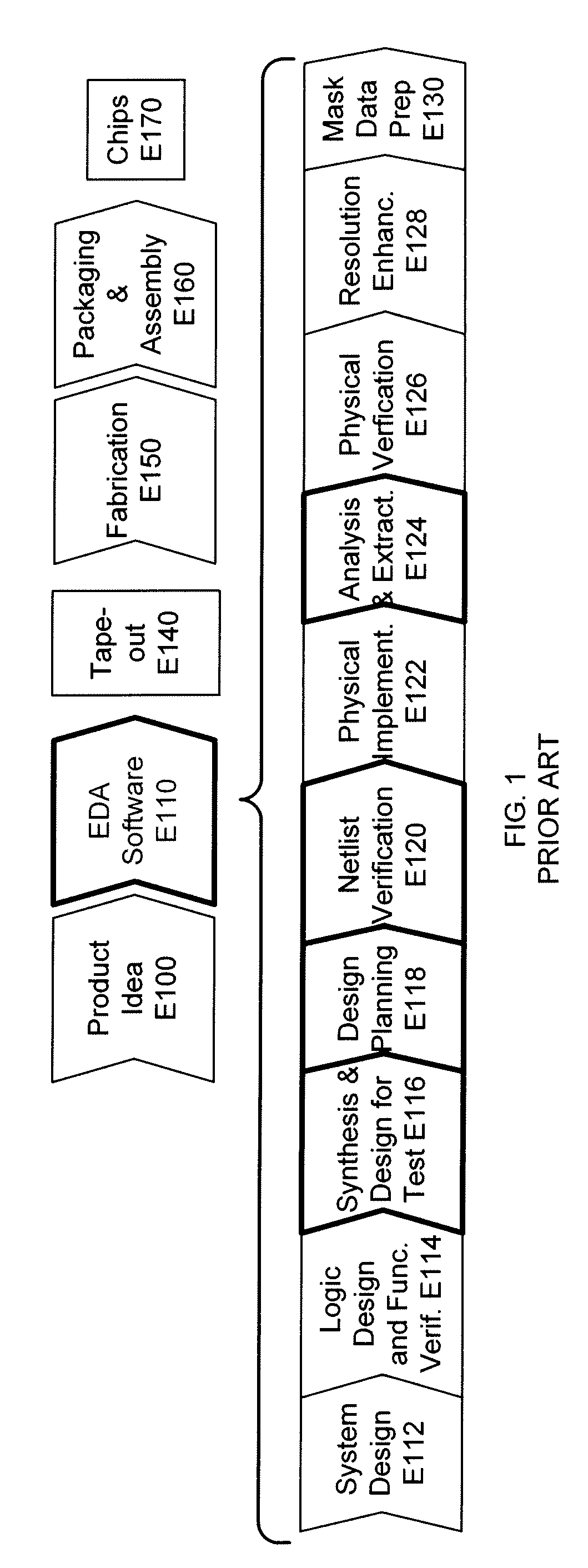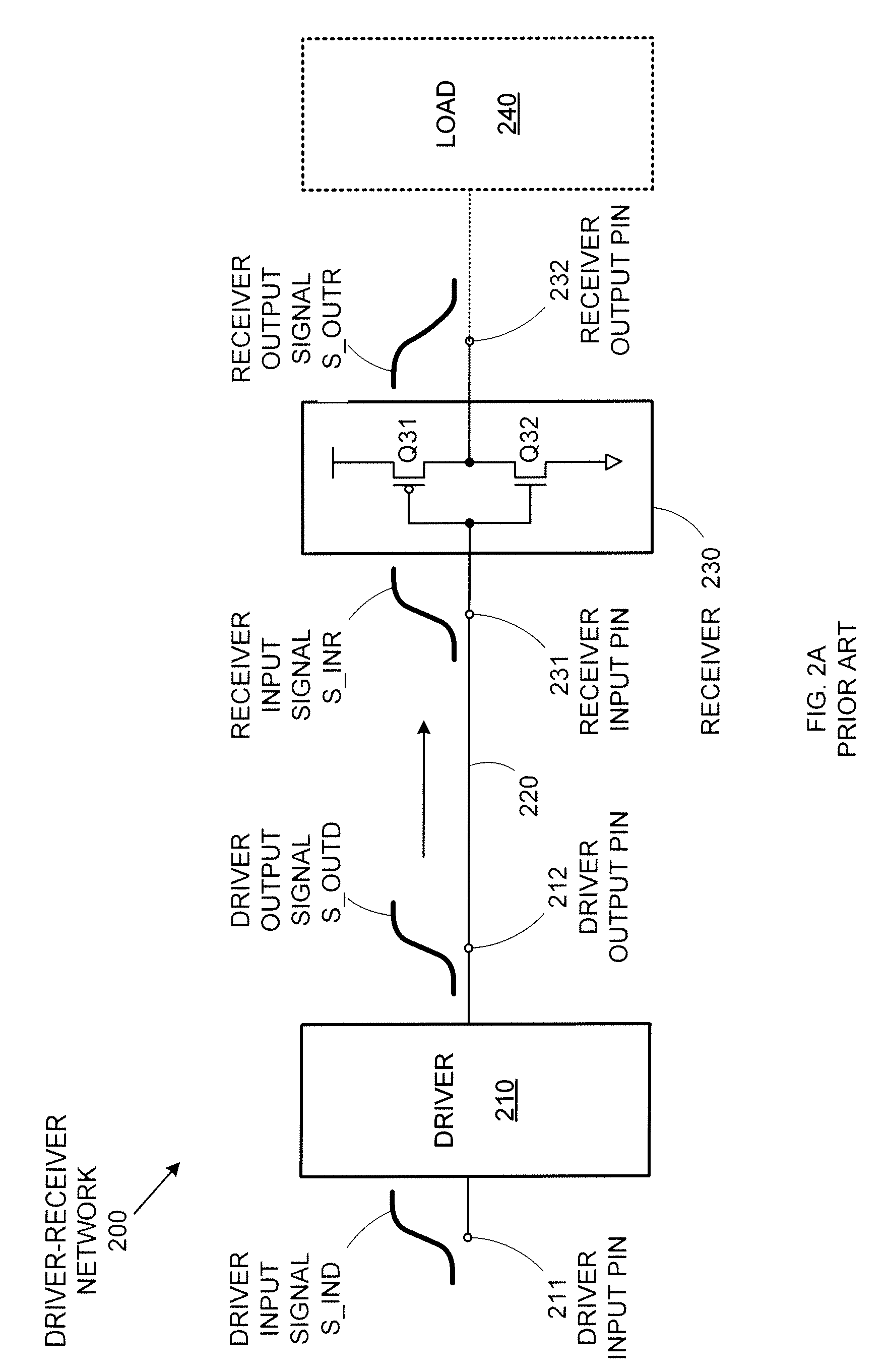Nonlinear receiver model for gate-level delay calculation
a receiver model and gate-level delay technology, applied in the field of electronic design automation, can solve the problems of increasing the model delay error, the inability to model the behavior of a signal at a receiver by a single (static) capacitance value, and the conventional cell receiver model is inadequate for the timing analysis of modern ic designs, so as to improve the accuracy of receiver modeling and increase the size of the cell library or analytical complexity.
- Summary
- Abstract
- Description
- Claims
- Application Information
AI Technical Summary
Benefits of technology
Problems solved by technology
Method used
Image
Examples
Embodiment Construction
[0046]Because of the various dynamic effects that become more significant as device geometries are reduced in size, conventional single-capacitance receiver models used in EDA systems can no longer provide accurate timing simulations. FIG. 4A shows a multi-capacitance receiver model that overcomes this deficiency.
[0047]FIG. 4A models driver-receiver network 200 shown in FIG. 2A by replacing receiver 230 with a cell receiver model 430-NL that includes a resistor R_NL and a non-linear capacitor C_NL serially coupled between receiver input pin 231 and ground. Like cell receiver model 230-ST shown in FIG. 3A, cell receiver model 430-NL generates a model receiver input signal S_INR-NL in response to driver output signal S_OUTD provided by driver cell 210.
[0048]However, unlike static capacitor C_ST in cell receiver model 230-ST, non-linear capacitor C_NL in cell receiver model 430-NL does not provide a single, static capacitance over an entire signal transition. Rather, non-linear capacit...
PUM
 Login to View More
Login to View More Abstract
Description
Claims
Application Information
 Login to View More
Login to View More - R&D
- Intellectual Property
- Life Sciences
- Materials
- Tech Scout
- Unparalleled Data Quality
- Higher Quality Content
- 60% Fewer Hallucinations
Browse by: Latest US Patents, China's latest patents, Technical Efficacy Thesaurus, Application Domain, Technology Topic, Popular Technical Reports.
© 2025 PatSnap. All rights reserved.Legal|Privacy policy|Modern Slavery Act Transparency Statement|Sitemap|About US| Contact US: help@patsnap.com



